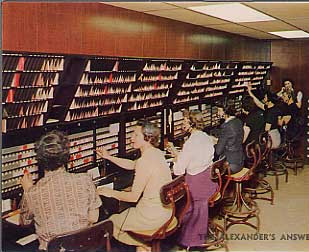Back in the U.S., AT&T was aware of the emerging demand for telephone recorders, but looked for alternatives. Anticipating a future public demand for answering machines, AT&T in 1936 made available a technology that would allow a customer (usually a small business) to “forward” incoming calls to a distant switchboard. The telephone company then leased special switchboards to private answering services, where live operators could take the calls and write down any messages. Live answering services were expensive for the consumer but relied on conventional technology, and were thus reliable and efficient. They still exist today and are used by doctors and others.
However, the clever engineers at AT&T’s Bell Telephone Labs were cooking up something different. Bell Labs had been involved in sound recording technology since the early 1920s, and had developed both disc and motion picture sound recording devices, which had been widely adopted in Hollywood studios and the record industry. There were also some devices built by AT&T that used pre-recorded announcements on motion picture film (although the public never really encountered them). Beside phonograph and optical recording, the other known form of sound recording was magnetic, yet there had been no practical application of it since the ill-fated telegraphone. Bell Labs engineers saw immediately that the advantage of magnetic recording was the ability to instantly erase and re-record messages. They constructed several forms of tape recorders (using a narrow, steel tape), and eventually even a relatively small, self-contained automatic answering machine. AT&T executives greeted this innovation with horror, claiming that if members of the public could record calls easily, the sense of privacy in telephone communication would be lost, and business would decline. The answering machine was officially denounced, and for a number of years the use of answering machines made by other companies was specifically forbidden by AT&T and the Federal Communications Commission which regulated the company. Bell Labs eventually discovered a small market for its tape recorders, but the development of steel tape technology was allowed to languish.
